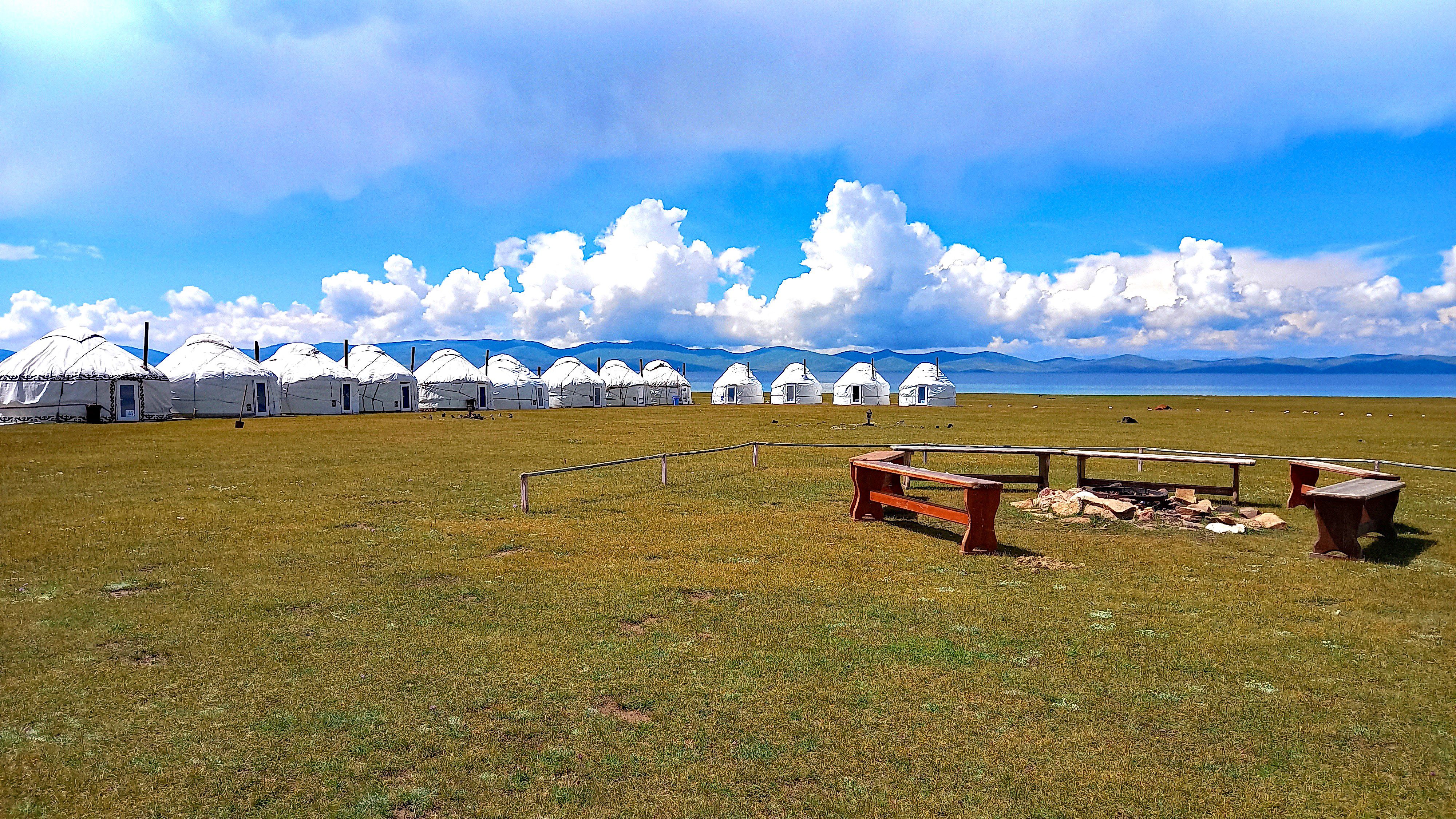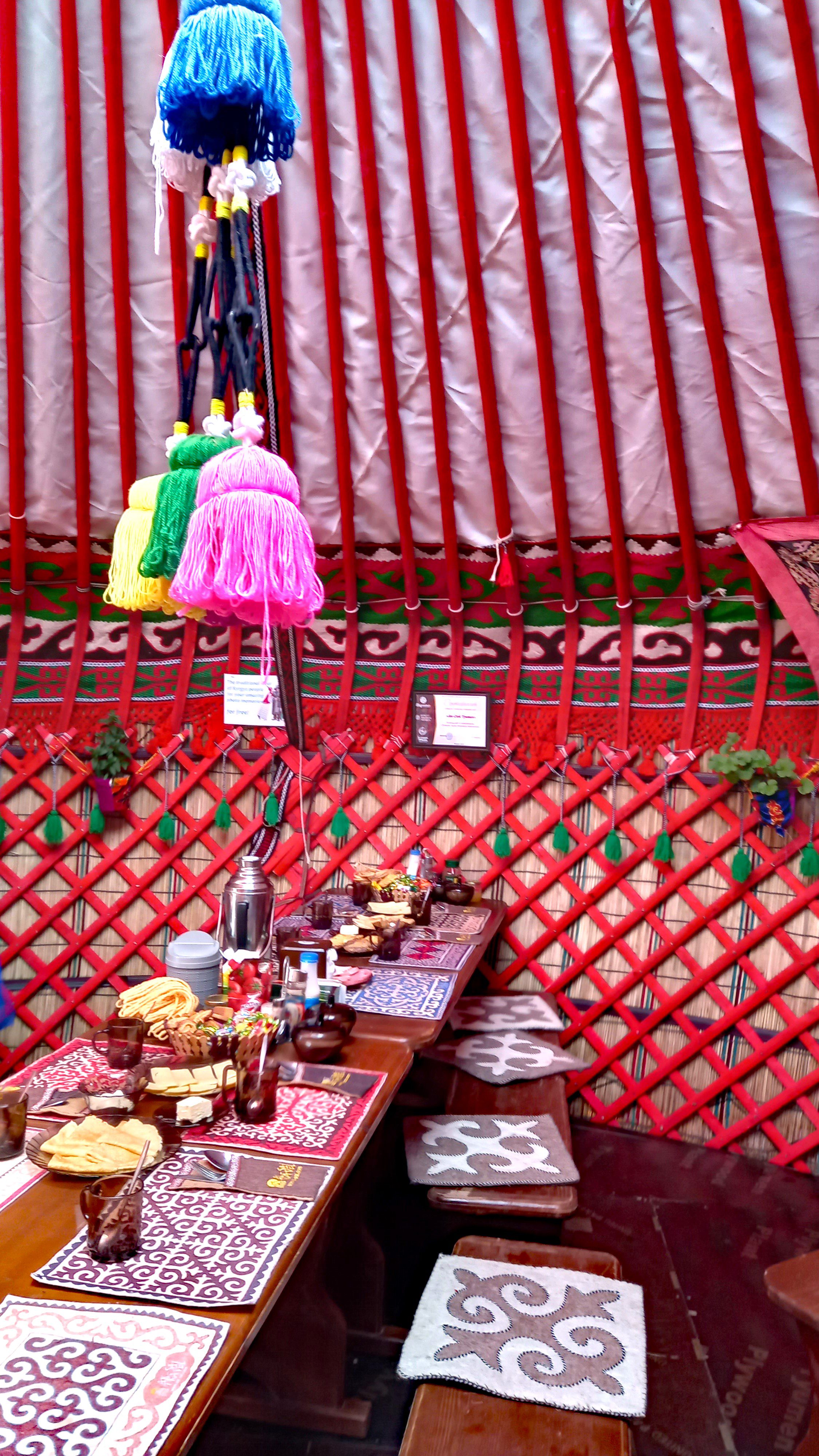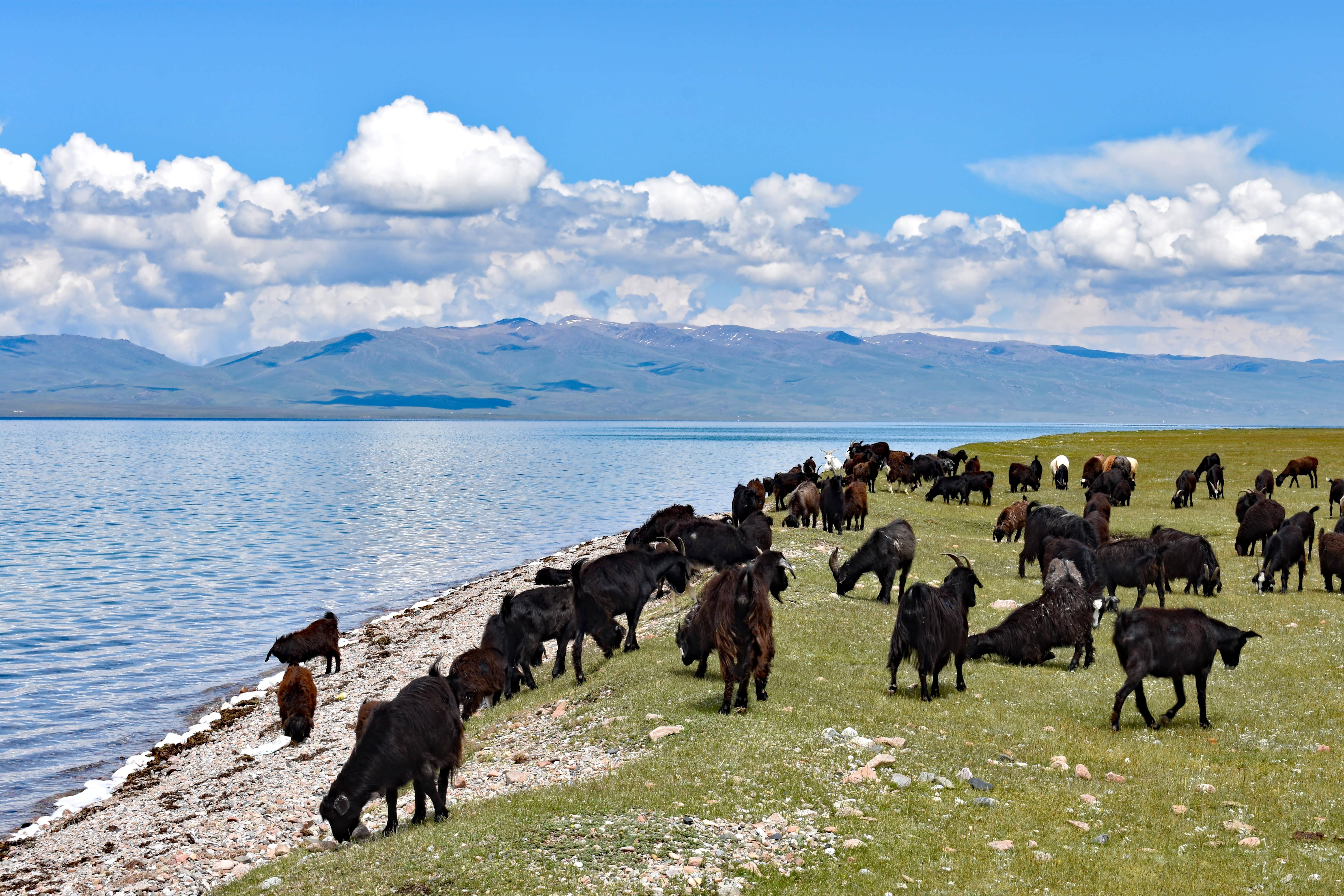Our Central Asia tour included three yurt camps, but our stay at Son Kul was the only one with a two-night stay. I was therefore a little apprehensive, as although we had stayed at some quirky places, we’d developed the mantra, ‘it’s fine for one night’. However, it got off to a positive start when after a long journey, we were greeted with glasses of wine and delicious dough pieces and jam for dipping.
The Camp
The 40 yurts were arranged in a horseshoe shape, and with only stones rather than fences denoting the camp’s footprint, animals, particularly calves and ponies, occasionally roamed. The central area had several outdoor seats, a wooden swing and benches around a camp fire which was lit in the evenings.
The Yurt
Our good-sized yurt had two comfortable single beds, each with a duvet, a richly coloured velvet bedspread and a wrapped sleeping bag which we never unravelled. The wooden floor was covered with a felt carpet and a sheepskin rug and as shoes had to be removed, felt yurt slippers with pointed toes were provided. A low wooden coffee table, with copper ornamental jug and bowl, had bottled water and glasses on a silver tray. Two traditionally patterned chests were ideal for our suitcases and we each had a small rail with hangers for towels. The entrance was through a low UPVC door with a glass window so we could see out, whilst a curtain could be pulled down for privacy. There were three charging points with electricity being available from 7am to 11pm, and although WiFi access could be purchased, $5 per hour, or $15 for 24 hours, we enjoyed a digital detox.
The modern shower and toilet facilities were a few minutes’ walk away for us, but we were one of the nearer yurts. With five showers on one side, and five toilets and handbasins on the opposite side of the mobile unit, they were more than adequate on our first night when there were only eight other guests. But they were a little overstretched the following night when a group of twenty arrived, and I suspect would struggle to cope if all 40 yurts were occupied. However, they were kept spotlessly clean and tidy. In the night, we needed to dress because temperatures plummeted to single figures, and our head torches were useful.
Each yurt had a wood-fired stove which was lit after 7pm whilst we were at dinner. Leaving your door unlocked was the sign that you wanted it restoked at 2.30am, which was fine the first night, but on the second, it became incredibly hot, and we left the door wide open for 45 minutes to let in cooler air.
Eating
In the beautifully decorated dining yurts, a slightly larger version of our yurt, our allocated tables had a constant supply of sweets and biscuits with both tea and coffee, being available during the day. Bearing mind our remote location and the facilities, the food was reasonable, but although lunch and dinner, involved several courses, they were served automatically regardless of whether you had finished the previous one.
Breakfast tables were laid with eggy bread, pancakes and sour cream, cheese slices and sliced meats including cow tongue. A choice of porridge, omelette, or fried eggs could be pre-ordered the night before.
At lunch, served at 1pm, the biscuits and sweets were supplemented with a platter of dried fruit and nuts, fresh fruits and salad with bread. We began with soup (lentil and a chunky vegetable during our stay) but as the main courses were heavy dishes involving meat and potatoes, we stuck to soup.
Dinner was served at 7pm and once again there was a soup (mushroom and buckwheat), two salads, followed by plov with rather fatty meat on our first night and a more interesting option of laghman (noodles) with vegetables on the followingnight.
Like others, we took beers with us, but also got the opportunity to try the national drink, kumis, fermented mares milk, which was a little like an alcoholic kombucha and said to be good for the gut.
Activities
There were optional activities available with horse riding ($15) and horse games, where you needed a group to share the $200 cost. A hike to nearby petroglyphs looked a little strenuous, especially at altitude and so we took the opportunity to chill. As well as catching up on our reading, we became avid ‘cloud watchers’, amazed at how quickly they not only moved, but completely changed direction of travel.
Son Kul at 3016m is the second largest lake in Kyrgyzstan and has 18 rivers running in to it but only one flowing out. A 15-minute walk through grass full of edelweiss, yellow buttercups and purple clover which attracted little orange butterflies, took us down to the lake shore. There were several nomads living nearby with huge flocks of grazing horses, sheep, goats and cattle but it was therefore disappointing to see the volume of rubbish left by campers.
Despite having mixed weather during our stay, we left feeling thoroughly relaxed, and despite being slightly nervous at the thought of two nights in a yurt, it was one of my favourite












